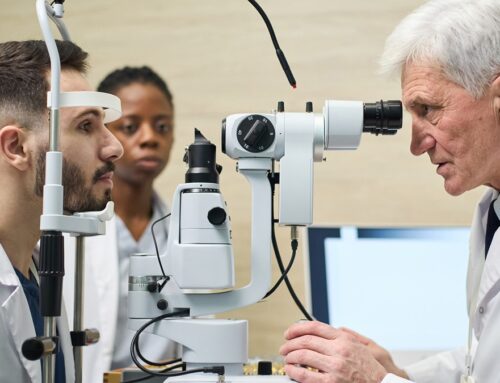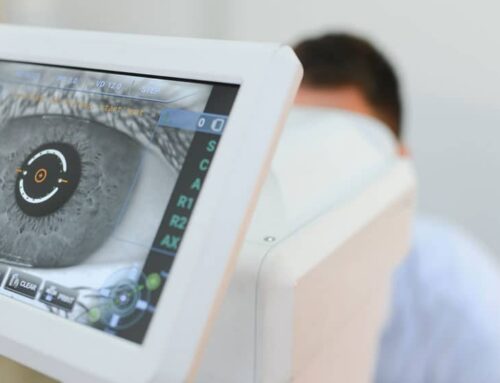Laser-assisted in situ keratomileusis, more often known as LASIK, is a technique of laser eye surgery commonly used to address various visual issues, including nearsightedness, farsightedness, and astigmatism. The clear tissue that protects the eye and primarily focuses light on the cornea will have its shape altered by a laser during this treatment.
But how does LASIK work? This article highlights details on what happens before, during, and after the procedure.
How does LASIK eye surgery work?
Before the Lasik Procedure
People who undergo a comprehensive evaluation before undergoing LASIK surgery to verify that they are healthy enough candidates for the operation typically have the best long-term benefits from the procedure.
Suppose you utilize contact lenses, which have the potential to alter the shape of your cornea. In that case, you will be required to refrain from wearing them altogether and instead rely solely on your glasses for the period leading up to your evaluation and surgery. This period must be at least a few weeks long. Your eye doctor will offer you particular rules based on the type of contact lenses you wear and the length of time you’ve been using contact lenses.
During the assessment, your eye doctor will inquire about your past medical conditions and operations and do a thorough eye exam to evaluate your level of vision and determine whether or not you are healthy enough to undergo the procedure without risk.
Your physician will be on the lookout for indicators of:
- Eye infection
- Dry eyes
- Inflammation
- High eye pressure
- Large pupils
In addition, your eye doctor will examine your cornea, noting its form, contour, thickness, and any anomalies that may be present. Your eye doctor will examine the regions of your cornea that require reshaping and will calculate the exact quantity of tissue that needs to be removed from your cornea.
Before performing LASIK surgery, most medical professionals will thoroughly examine your eye using wavefront-guided technology. During this examination, a scanner will produce a chart of your eye that is extremely detailed and resembles a topographic map. Your eye doctor can remove corneal tissue with increased precision if the measurements are taken with greater attention to detail.
Your surgeon will go over the potential drawbacks and advantages of LASIK surgery with you before the procedure and answer any concerns you may have about what to anticipate before and after the procedure.
During the Lasik Procedure
LASIK procedure is often finished in less than 30 minutes. During the process, you recline in a chair on your back. You may be offered medication to aid with relaxation.
After administering numbing drops to your eye, your doctor will use an instrument to keep your eyelids open. A suction ring applied to the eye before cutting the corneal flap may create a sensation of pressure and a slight dimming of vision.
Your eye surgeon removes a little hinged flap from the front of your eye using a blade or a laser. Folding back the flap provides access to the portion of the cornea to be altered. Your eye surgeon reshapes portions of your cornea using a laser. With every laser pulse, a minute quantity of corneal tissue is eliminated. After straightening the cornea, the surgeon repositions the flap. Typically, the flap cures without stitches.
During operation, you will be instructed to concentrate on the point of light. This light helps you maintain a steady gaze as the laser reshapes your cornea. While the laser eliminates corneal tissue, you may sense a distinct odor. Some individuals report smelling an odor comparable to that of burned hair.
If you require LASIK surgery on both eyes, the treatment will typically be performed on the same day.
After the LASIK Procedure
Immediately following surgery, your eye may itch, feel gritty, burn, and produce tears. You will probably experience eyesight impairment. Generally, you will suffer minimal pain, and your sight will recover rapidly.
After the surgery, you may be given pain medicine or eyedrops to maintain you comfy for many hours. Your eye doctor may also recommend wearing an eye shield at night while your eye heals.
After surgery, you can see, although your eyesight will not be immediately clear. After approximately two to three months, your eye will mend, and your vision will settle. Your odds of better vision depend partly on the quality of your vision before surgery.
Conclusion
LASIK frequently provides enhanced vision without the need for glasses or contact lenses. After laser treatment, you have a very good chance of getting 20/25 vision or better.
Ready to learn more about how does LASIK work? Search our directory to connect with the right expert for your needs.







